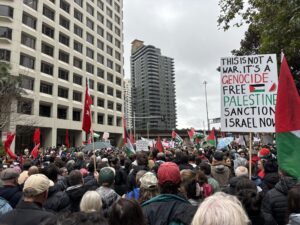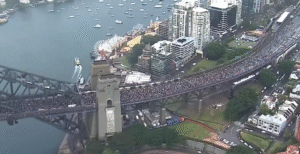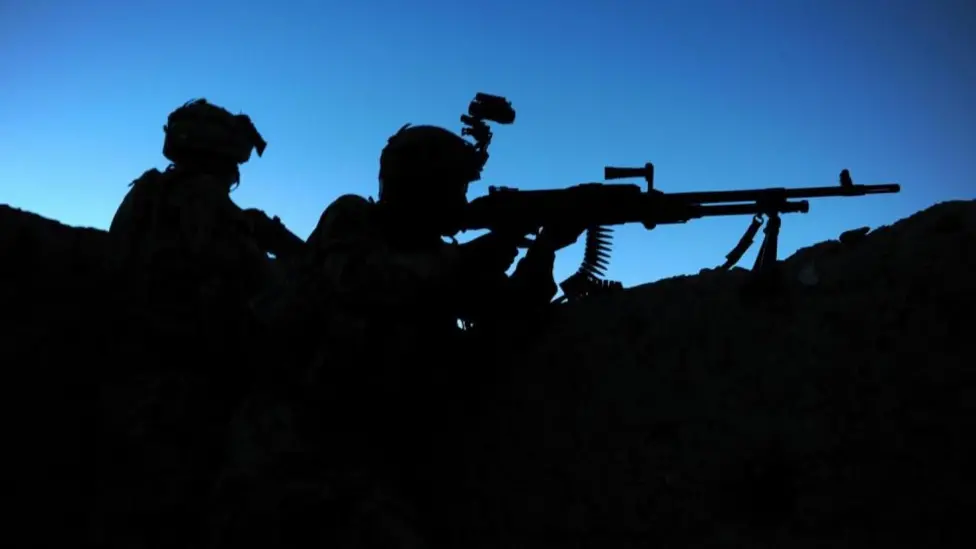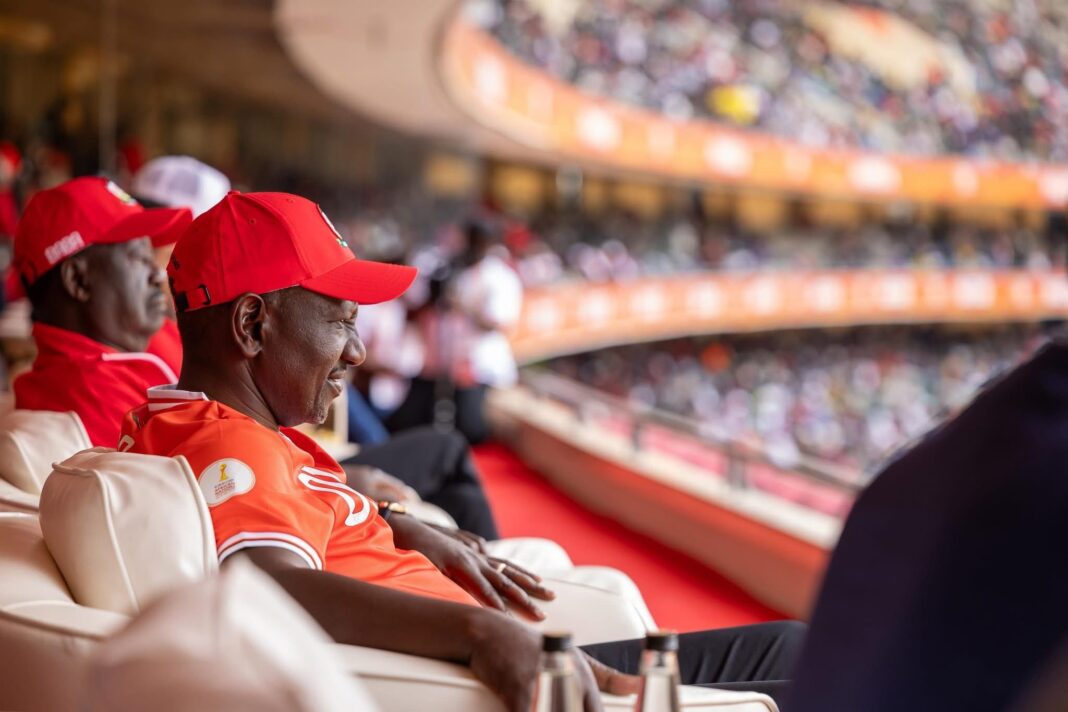SYDNEY — Australia’s most iconic landmark became the stage for an unprecedented display of solidarity with Gaza on Sunday, as tens of thousands of demonstrators braved torrential rain to march across the Sydney Harbour Bridge in what organizers called a defining moment for the Palestinian cause.
The “March for Humanity” proceeded after a dramatic legal victory when the New South Wales Supreme Court overturned police attempts to block the rally, marking the first authorized protest of its kind on the world-famous bridge since World Pride celebrations in 2023.
The march began at 1 p.m. local time as demonstrators crossed the 1.1 kilometer (0.7 mile) bridge, transforming the steel arch into what witnesses described as a sea of people spotlighting the suffering in Gaza.
The crowd’s composition reflected the broad coalition driving Australia’s pro-Palestinian movement.
WikiLeaks founder Julian Assange marched alongside tens of thousands of pro-Palestinian protesters, marking one of his rare public appearances since his release from detention.
Labor backbench MP Ed Husic attended the march and called for his ruling party, led by Prime Minister Anthony Albanese, to recognise a Palestinian state.

Former Premier Bob Carr also joined the procession, lending political weight to the demonstration.
The Palestine Action Group Sydney organized the march in response to what they described as an escalating humanitarian catastrophe in Gaza.
More than 60,000 Palestinians have been killed according to Gaza’s health ministry since the conflict erupted following Hamas’s October 2023 attack on Israel.
Dozens of marchers held up banners listing the names of thousands of Palestinian children killed since the Gaza war broke out.
The protest’s path to realization was fraught with legal challenges.
NSW Police had sought to block the demonstration citing public safety concerns, while Premier Chris Minns publicly opposed the march.
However, Justice Belinda Rigg ruled that the fundamental right to peaceful assembly outweighed these concerns, allowing the demonstration to proceed under the protection of the Summary Offences Act.
Weather conditions tested the resolve of participants as demonstrators braved pouring rain and heavy winds.
Despite the challenging conditions, the march maintained its peaceful character throughout.
The bridge closed from 11.30am to about 5pm, causing significant transport disruptions across Sydney as authorities had warned.
Midway through the demonstration, NSW Police sent mass text messages directing protesters to turn back toward the city center, citing ongoing public safety concerns.
The crowd complied in an orderly fashion, demonstrating the disciplined nature of the protest despite the challenging weather and logistical constraints.
The march represented more than just a display of numbers.
An estimated 25,000 people marched across the Sydney Harbour Bridge to protest the war on Gaza, with hundreds of police mobilised, though some estimates placed the total participation significantly higher.
The demonstration’s visual impact was amplified by protesters carrying placards reading “Stop the war” and “End starvation in Gaza,” creating a powerful tableau against the backdrop of Sydney’s harbor.

The protest’s broader political implications were immediately apparent.
The NSW Jewish Board of Deputies criticized the court’s decision to allow the march, while Prime Minister Albanese reiterated his government’s position that Australia would not recognize Palestinian statehood without meeting certain unspecified conditions.
Assange did not address the crowd or talk to the media, maintaining his characteristic reserve even while lending his symbolic presence to the cause.
The successful completion of the march represents a significant victory for Palestinian advocacy groups in Australia, who have faced increasing restrictions on their ability to organize large-scale demonstrations.
Human rights organizations, including Amnesty International Australia, had previously warned that police attempts to block the march constituted “a grave threat on the right to protest against genocide”.
Transport authorities had warned of major disruptions throughout Sydney, and the bridge closure created significant logistical challenges for the city’s weekend traffic patterns.
However, the peaceful conclusion of the march without major incidents vindicated organizers’ claims that they could manage a large-scale demonstration responsibly.
The Sydney demonstration occurred amid mounting international pressure on Israel to end military operations in Gaza.
The protest’s timing and scale reflect growing Australian public concern about the humanitarian situation, with organizers arguing that traditional diplomatic channels have proven inadequate to address the crisis.
As the rain-soaked crowd dispersed from the bridge Sunday evening, the demonstration’s legacy was already being debated across Australian political circles, with supporters hailing it as a watershed moment for Palestinian solidarity and critics questioning the appropriateness of such displays on national landmarks.


